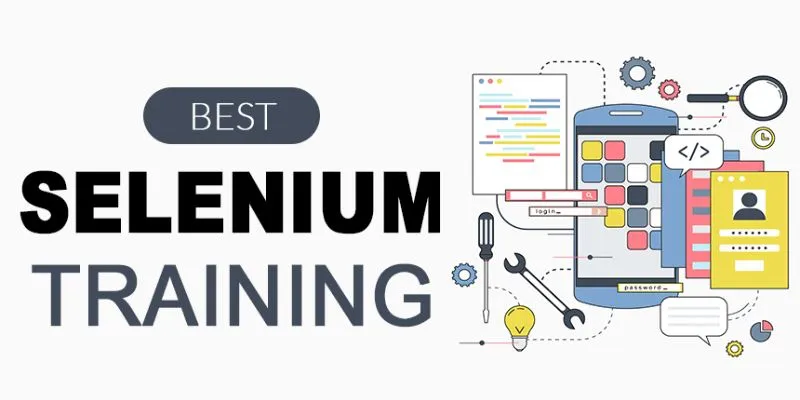
People use web applications on many different browsers, operating systems, and devices. Because of this variety, development and QA teams face the tough job of making sure everything works the same way everywhere. For example, a feature that works in Chrome might not behave the same in Firefox. A layout that looks good in Safari could break in Edge. That’s why cross-browser testing is so important, and Selenium is a leading tool for this purpose. If you want to learn advanced testing skills, a Selenium Course in Pune at FITA Academy can help you build reliable and compatible automation solutions.
Why Cross Browser Testing Matters
Every browser uses its own rendering engine, JavaScript interpreter, and CSS handling mechanism. As a result, even small differences in how HTML or JavaScript is processed can lead to significant variations in the user experience. Without rigorous cross browser testing, businesses risk releasing applications that work perfectly on some platforms but fail on others, resulting in user frustration, increased support issues, and potential loss of conversions or revenue.
Cross browser testing ensures:
- Consistent UI and UX across all supported browsers
- Accurate rendering of HTML, CSS, and JavaScript
- Validation of browser-specific features and behaviors
- Smooth interaction with elements and forms
- Prevention of browser-dependent bugs before deployment
Selenium, with its multi-browser support and automation flexibility, becomes an indispensable solution for achieving this compatibility.
How Selenium Supports Cross Browser Testing
Selenium WebDriver provides native support for nearly all major browsers, allowing automation scripts to run on various platforms with minimal change, a capability strongly emphasized in a Selenium Course in Mumbai. Selenium’s architecture interacts directly with the browser’s automation engine, ensuring accuracy and real-time simulation of user actions.
Here are the primary browsers supported by Selenium:
1. Google Chrome
Chrome is widely used, and Selenium provides excellent support through the ChromeDriver.
It interacts with the Chrome browser using the Chrome DevTools Protocol, offering fast and reliable execution. Selenium scripts for Chrome are among the most stable due to frequent updates and strong community support.
2. Mozilla Firefox
Selenium supports Firefox via GeckoDriver, which communicates using the WebDriver protocol.
Firefox is known for its strict standards compliance, making it vital for testing layout behavior and CSS compatibility.
3. Microsoft Edge
Edge’s transition to a Chromium-based engine has improved compatibility and performance. Selenium integrates through EdgeDriver, ensuring smooth execution and faster script stability.
4. Safari
SafariDriver enables testing on macOS environments. Since Safari handles elements and styles differently in certain scenarios, testing on Safari is crucial for applications targeting Apple device users, a skill thoroughly covered in a Selenium Course in Kolkata.
5. Opera and Other Browsers
Although less common, Selenium can support these browsers through custom drivers or Chromium-based compatibility options.
Setting Up Cross Browser Testing in Selenium
One of Selenium’s biggest strengths is its ability to run the same test script across different browsers with small configuration changes. This is typically achieved by switching the WebDriver instance based on the browser type.
A simple approach involves using conditional logic or configurations (via JSON, XML, or property files) to specify the target browser. This promotes maintainability and reduces the need for rewriting test scripts.
Parallel Execution for Faster Cross Browser Testing
Running tests across multiple browsers can be time-consuming if executed sequentially. Selenium Grid resolves this challenge by enabling:
- Distributed test execution
- Parallel testing across browsers
- Reduced test cycle duration
- Ability to excuted tests on remote machines or cloud environments
Selenium Grid supports both local and cloud-based infrastructure, making it scalable for small teams as well as enterprise-level organizations, a key capability highlighted in a Selenium Course in Kanchipuram.
Cross Browser Testing in the Cloud
Cloud-based platforms like BrowserStack, LambdaTest, and Sauce Labs provide access to a vast range of real browsers, operating systems, and devices. Integrating Selenium with these services offers several advantages:
- No need to maintain physical devices or local environments
- Real-time testing on hundreds of browser-OS combinations
- Automated screenshots, logs, and performance reports
- Faster debugging and continuous integration support
This combination of Selenium’s automation capabilities and cloud testing flexibility ensures flawless cross browser reliability.
Challenges in Cross Browser Testing
While Selenium is powerful, cross browser testing does present some challenges:
- Handling inconsistent DOM structures across browsers
- Element synchronization issues due to browser-specific rendering speeds
- Differences in CSS interpretation
- Variations in JavaScript execution timing
- Browser driver version mismatches
These challenges can be addressed using proper synchronization techniques, explicit waits, flexible locators, and a well-structured test framework.
Best Practices for Effective Cross Browser Testing with Selenium
To maximize efficiency and reliability, testers should follow these practices, an approach widely emphasized in a Selenium Course in Tirunelveli.
- Use responsive CSS and flexible locators
- Keep WebDriver and browser versions updated
- Leverage Selenium Grid for parallel execution
- Implement data-driven and modular frameworks
- Maintain a prioritized list of supported browsers based on user analytics
- Regularly test on real devices, not just emulators
By following these guidelines, teams can minimize inconsistencies and ensure a seamless experience for all users.
Cross browser testing is no longer optional it is a fundamental requirement for delivering high-quality, user-friendly web applications. Selenium’s broad browser support, flexible automation capabilities, and integration with cloud platforms make it an ideal tool for achieving comprehensive cross browser coverage. When implemented correctly, Selenium helps ensure that users receive the same smooth experience regardless of the browser or device they choose. As web ecosystems continue to evolve, mastering Selenium’s cross browser testing features becomes essential for creating robust, future-ready digital solutions, a capability increasingly valued by learners and professionals at a leading Business School in Chennai.
Also Check: